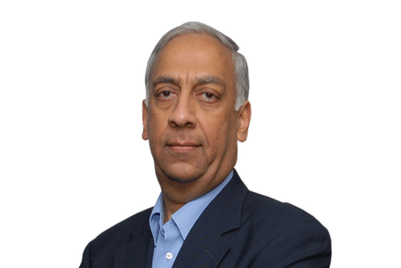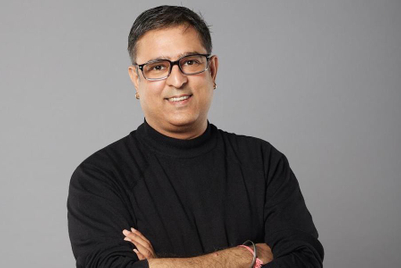
Everywhere it’s a picture of gloom and doom. I speak not of the crash of ’09 and the now-you-see-it-now-you-don't recovery, but of the general mood in the advertising industry around the world.
From the annual 4A’s conference in Texas in March to the annual AAAI conclave in Goa in April, the burden of the song was the same: revenue under pressure, scarcity of talent, rising talent costs, and no money to develop the talent pool.
As I sat at the Goa conclave I wondered how many of us, lamenting the state of affairs, have seen better days. How good were the good old days, really? To look beyond the rose-tinted rear view mirror I dug into my archives and found some data.
Let’s get the overall perspective first. Total media expenditure in 2010 was Rs 29,411 crore. In 1985 it was Rs 449 crore. That’s a compound annual growth rate of 18.25% for 25 years straight. Factor in long-term inflation and that’s still way beyond GDP growth.
Back then advertising agencies earned 15% commission and handled pretty much everything, including printing, packaging design and sales conferences, and made a hefty margin on artwork: so much so that if an agency’s gross income was anything less than 17% of billing they had some serious questions to ask themselves.
No other compensation model was known, and clients largely paid on time, not the least because print was dominant (74% in 1985) and INS wielded a big stick. The closure of MCM, the original creative hotshop, and Aiyar’s in 1975 due to defaulting on INS payments put paid to any stray thoughts anyone may have had on the subject.
Today there is no standard media commission, everything non-media is handled by someone else, and the standard for gross earning, made up of commission and fees, is probably more like 10% of billing.
In 1984-85 HTA (JWT), the largest agency in the country – which it has been since 1929, except when Alyque said it wasn’t – had a gross billing of Rs 35.5 crore. On revenue of Rs 5.30 crore it made a profit before tax of Rs 36.5 lakh, or 6.8% of revenue, and after tax of Rs 2.8 lakh (0.5%). After paying Rs 2.5 lakh in dividend (it was a 100% employee-owned company) retained profit was Rs 30,000.
So the scale was small, but then the cost of everything was. (In 1974 the entire advertising industry billed Rs 95 crore, and the Times of India Bombay cost Rs 40 per col cm – equal to Rs 8 per sq cm). The lament – and the implication – is that if agencies today earned 15% commission like they used to they would be able to spend on all the things they should spend on, mainly talent and knowledge as, by implication, they could then. Well...
In the late 70’s the most profitable agencies, like OBM (O&M) and Everest, earned pre-tax profits of 15-25% of revenue. Global networks made 12-15% of revenue, but the norm in India was in the region of 6-8% (or, as a thumb rule, 1% of gross billing). Anything over that was enviable. That’s a far cry from today’s norm of 20% of revenue.
Staff cost took the largest share of the revenue as it does today, except that then it typically took 65%. That was not because people were highly paid, but because there were so many of them. In those technology-less days dozens of artists painstakingly made physical artwork; armies of clerks in Media typed schedules, estimates and release orders on manual typewriters, hand-wrote registers, and managed thousands of film prints being exhibited in stand-alone cinemas all over the country; and other armies of clerks manned the Checking & Billing and Accounts departments.
Today we work in smart offices. 3,000 youngsters go to Goafest each year to celebrate their work and get to see and hear national and global big names. More and more people go to Cannes each year and do the same thing on an international scale. There’s huge international exposure even in domestic agencies, because access is possible.
All of that was unthinkable then. After salaries and rent there was little left to do anything with. All we had was on-the-job training. Your bosses took you under their wing, took responsibility for you and taught you. Stern fathers, they worked you to the bone, kicked your butt for your errors, and took quiet pride in your successes. We were underpaid and overworked, but we loved it.
The difference, you could say, is the difference in parenting. Mother’s cooking has been replaced by branded foods in shiny packages, purportedly delicious and good for you; parental supervision, by paid professional care. Parents busy making it in the world have little time for their children. They buy them all that’s desirable and send them to learn judo and ballet and tennis and pottery, and lament that the relationship isn’t what they wish it was.
If we’ve gone from 17% revenue to 10%, that’s because we undercut each other and devalue or worth. But we’ve also gone from 7% margin to 20%, with relatively fewer mouths to feed. We’ve come a long way: middle class families who’ve made good.
As we enjoy our success we want our kids to have all that we didn’t. But in the process we deprive them of the one thing we did have: care. If instead of rushing headlong all the time we paused for a moment and gave them quality time, then perhaps they would feel about us as we wish they did. Else we shouldn’t be surprised if they fly the nest as soon as they grow wings.


.jpg&h=334&w=500&q=100&v=20250320&c=1)
.jpg&h=334&w=500&q=100&v=20250320&c=1)

.jpg&h=334&w=500&q=100&v=20250320&c=1)


.jpg&h=334&w=500&q=100&v=20250320&c=1)


.jpg&h=334&w=500&q=100&v=20250320&c=1)



.jpg&h=268&w=401&q=100&v=20250320&c=1)



